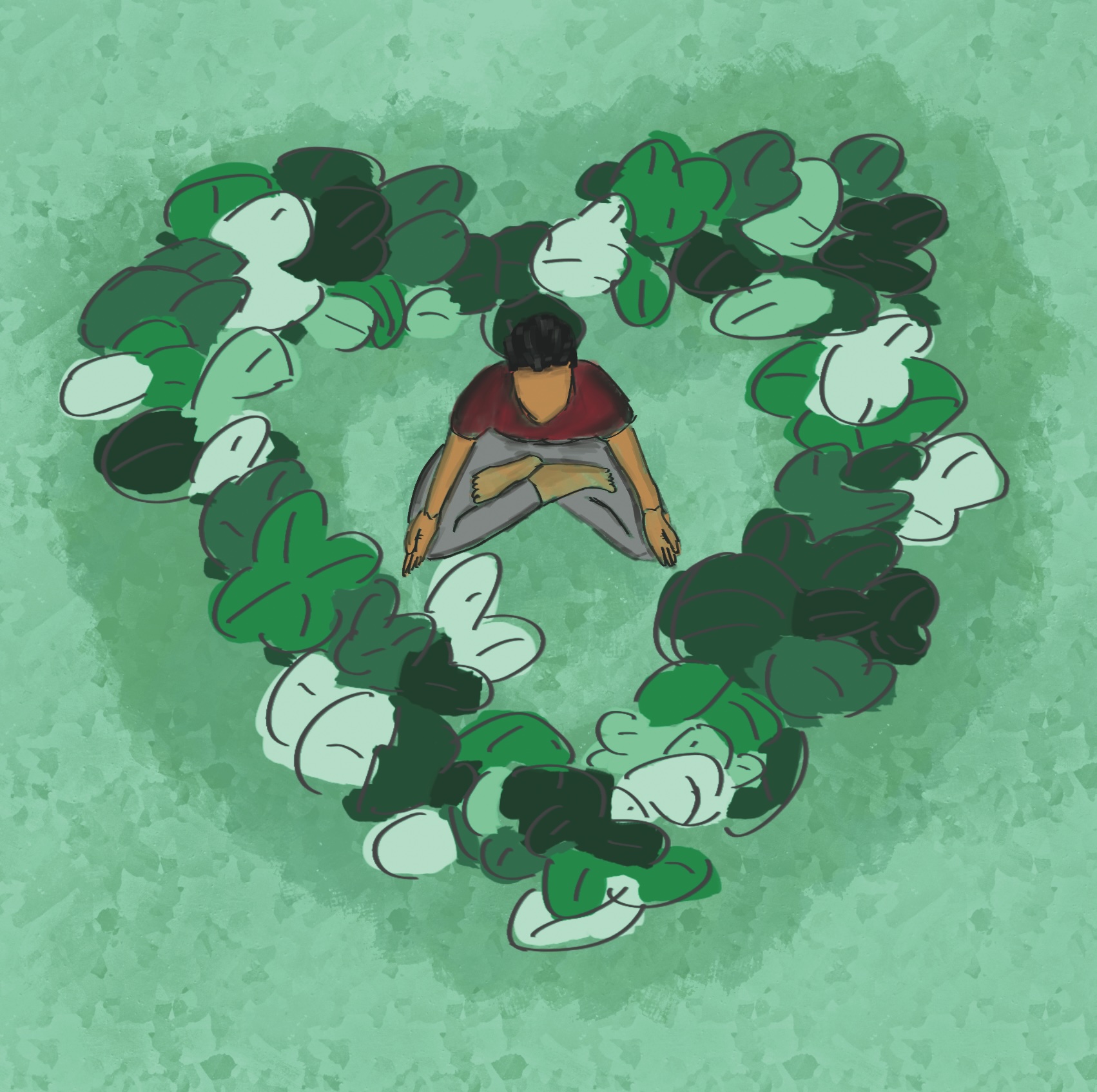All in a pulse
October 11, 2024
What can you learn about health from a pulse? The answer that you would probably expect would be a heartbeat. But how about rheumatoid arthritis? Lactose intolerance? I’m assuming those weren’t the first to come to mind. Before I came to India, I would have never believed that you could diagnose someone with those conditions from a minute of holding their wrist. Pratapi Bai changed that for me.
I grew up gargling salt water and drinking ginger tea with turmeric to cure a sore throat. After a stubborn sinus infection, I reluctantly ditched cough syrup for oregano oil, because my mother convinced me it would work wonders. (And to my surprise, it did.) Natural medicine has always been a part of my upbringing, but I failed to previously consider it a viable option for treatment in comparison to pharmaceutical drugs. This Western medical paradigm is called allopathic medicine, otherwise known as biomedicine, and introduces foreign or synthetic compounds into the body to target a specific area or symptom.
In contrast, the Indian system of medicine is called AYUSH, which stands for five practices: ayurveda, yoga, unani, siddha and homeopathy. Ayurveda is commonly known in the West as an alternative or traditional medicine and develops treatments from plant compounds. Although America has adopted and transformed yoga, in its original form, its purpose is to balance your internal and external consciousness and bring vitality to the body. Unani resembles ayurveda but originates from Greek and Muslim influences and Hippocrates’ theory that illness comes from the imbalance of blood, phlegm, yellow bile and black bile in the body. (Fun fact: Unani has the same epistemological root as biomedicine!) Siddha uses herbs and mineral elements like mercury and sulfur as the base of treatment. Lastly, homeopathy introduces a substance similar to what causes the illness into the body to treat it. (Vaccines use the same methodology.) Each of these practices are valued and studied alongside the development of biomedicine in India.
In ayurveda, systems of the body are thought to be microcosms of universal elements. Bone and cartilage is the earth; bodily fluids are the water; digestion, endocrinology and heat regulation are fiery processes; the nervous system is air; and blood, lymph vessels, pores and nerves are all ethereal. These principles guide how ayurvedic doctors read the three doshas: vata (air and ether), pitta (fire and water) and kapha (water and earth).
Vata comes from the gut and regulates physical and mental motion in the body, similar to the emerging concept of the gut microbiome in neurobiology. Pitta resides in the navel and represents transformation through the body. Kapha stabilizes the other two doshas, grounding these processes from the chest.
These concepts may seem unrelated to the pulse, but trust me—it all connects back. Ayurvedic doctors and some traditional healers read the speed of the pulse at three levels to study the three doshas and the balance or imbalance between them. For students in my program, these imbalances led to the unveiling of previous allopathic diagnoses of arthritis for one and lactose intolerance for another—all from a single pulse reading.
Pratapi Bai is a traditional healer (“guni”) from Karkali Village in Udaipur. From the age of ten, Pratapi shadowed her grandfather, learning which plant combinations could be used to treat a variety of common illnesses. She eventually took over the practice herself and specialized in women’s reproductive health and fertility. Now, people come to her house from all over the state to get treated for anything from bone dislocations to breast cancer.
Oftentimes, Pratapi Bai receives patients who have exhausted options for allopathic care and turn to her services, including the former governor of Rajasthan who was scheduled to have a knee replacement surgery performed in the United States before Pratapi restored her ability to walk.
“Everyone in my family is connected through this knowledge,” Pratapi said. Now, she trains students in ayurvedic studies across the state to keep this knowledge alive.
In contrast to biomedicine, many experts that I spoke to praised the absence of side effects in natural medicine. Professor of Unani Medicine at Jamia Hamdard University in Delhi Mohd Akram explained how he decided to study Unani medicine (one of the facets of AYUSH) after he witnessed kidney damage and other common side effects from allopathic medicines. He considers the disconnect between the body and treatment as a source of conflict in allopathy but not AYUSH.
“Unani goes with nature while biomedicine goes against nature,” Akram said. “But nature is always there.”
Healing from a biomedical perspective is a cycle in which you address the cause of discomfort, treat the symptoms and repeat when they return. By contrast, Dr. Akram described how AYUSH is a holistic approach to medicine that focuses on preventative as opposed to emergency care. AYUSH sees a person as an individual, where the body and the mind exist as a harmonious system rather than a sum of its targetable parts.
The beauty of the Indian system of medicine is that it embraces medical pluralism—the coexistence of both preventative and direct health interventions through a biomedical and AYUSH approach. Next time my doctor takes my pulse, I will know that there’s a whole other way of viewing its role in my body, and both Indian and Western perspectives can lead to vastly different, but meaningful, interpretations.


Comments
Before submitting a comment, please review our comment policy. Some key points from the policy: